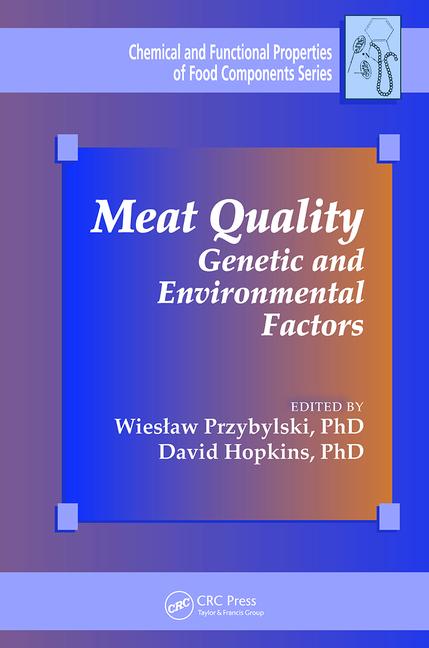Cooking & Chilling Systems
Energy efficiency: Gain or drain?
Equipment innovations have made the transfer of BTUs into or out of the product more efficient than ever.




Any processing equipment in a meat or poultry plant will be measured by its output, but the amount of product it can produce is only a part of the story. Utility costs are perpetually a concern with any business, and in the meat industry, cooking and chilling equipment can take up a large portion of a company’s utility bills.
In one estimate, about 60 percent of a processor’s electrical costs can be tied up in refrigeration. Taking holding coolers and freezers out of the equation, about 40 to 50 percent is directly involved with chilling or freezing products during the entire process. The majority of the remaining usage goes to compressed air, lighting and physical movement of the product. On the cooking side, about half of a company’s natural gas usage is associated with cooking, including both steam production and what is directly associated with the cooking medium.
Tyson Foods, the nation’s largest meat processor, has an Energy Engineering Group that is responsible for energy efficiency and optimization, primarily for the company’s poultry, prepared foods, case-ready and renewable products divisions. Danny Hamilton is the director of the group, and he has a counterpart that handles the 13 fresh meat facilities. He says that the company’s work with energy efficiency and optimization also includes solar, wind and alternative energies.
“The primary goal or focus of the group is to develop, implement and maintain the energy-management process for continuous improvement, based on energy management through energy intensities, standards and variance to the same,” he explains.
Hamilton notes that equipment manufacturers have developed many improvements to the cooking and chilling equipment, so when Tyson looks at purchasing new technology, the equipment is inherently more energy efficient than previous equipment. The goal of new equipment purchases then, is to find the product that can accomplish the end goal more effectively.
“”In the case of bird chill, we’re looking for the bird water chillers that can more effectively transfer the BTU (British thermal unit, an amount of heat energy needed to raise the temperature of one pound of water by one degree F) from the product into the water — to remove the BTU out of the product and chill it more effectively. [Since] it’s being designed to do that and is doing it more efficiently and effectively, it lends itself to a better use of energy.”
Elsewhere on the chilling/freezing side, equipment such as quick-freeze or blast tunnels has improved to allow operators to run more product through a smaller space, become more energy efficient in the process.
Hamilton adds that cooking equipment has become more energy efficient by running on thermal fluid instead of direct natural gas-fired fryers and ovens. Instead of bringing natural gas to the equipment, operators are instead transferring thermal fluid, which is a more-efficient heating medium to go into the cookers and fryers.
“Through the whole industry, that’s primarily what you find — ovens that use thermal fluid instead of the direct natural gas-fired ovens that we used to use,” he says. Additionally, the cooking side has seen improvements in airflow, and smaller systems like dual-spiral ovens give users more control over things like humidity.
“Because of the way the equipment is set up and the way we are able to centralize the production of thermal fluid for cooking or the production of steam, we have seen some improvements to our energy efficiencies through those processes,” he adds. “Probably more important than that is the way we can set up our systems for those processes; it gives us more options and control to manage our energy by the load that we’re consuming out in the plant.”
Hamilton explains that if the source of the heat, steam or refrigeration is coming from a central location, it is easier to monitor the amount that is being sent out to run the operations. Hamilton points out that at the facilities he oversees, the systems are centralized at mechanical rooms, making things easy to monitor.
“We can monitor what that load feed is out to the facility, as far as refrigeration load or heating load,” he says, “and we can better control how we set up our system to deliver the heating or refrigeration out into the process and gain energy efficiencies by only running equipment that we need to run to satisfy the process. As the load goes down to the facility, we can dial back the equipment to run more efficiently because of the decreased load,”
Hamilton recommends that facilities do an energy survey or have one done by a third party, and understand where the energy is being consumed in a plant.
“Focus on 80 percent of the energy — 80 percent of what’s consuming the natural gas or the electricity — which in our business is usually narrowed down to about four or five systems,” he explains. “Understand what your product and your equipment demand, as far as energy consumption, and start to manage your system to that variance.”
Studying its energy usage will help a company realize how much heating or cooling it is physically producing versus how much should be produced, based on product loads, product characteristics and throughput, and adjust accordingly.
Another key facet of maintaining peak energy efficiency is to have the cooking and chilling equipment on a regular preventative-maintenance program. Hamilton explains that PMs are executed on a regular basis to keep the equipment running at peak production. Additionally, the expected mean time between failures on critical pieces of equipment is determined, and they are address before a failure occurs.
Looking for a reprint of this article?
From high-res PDFs to custom plaques, order your copy today!








